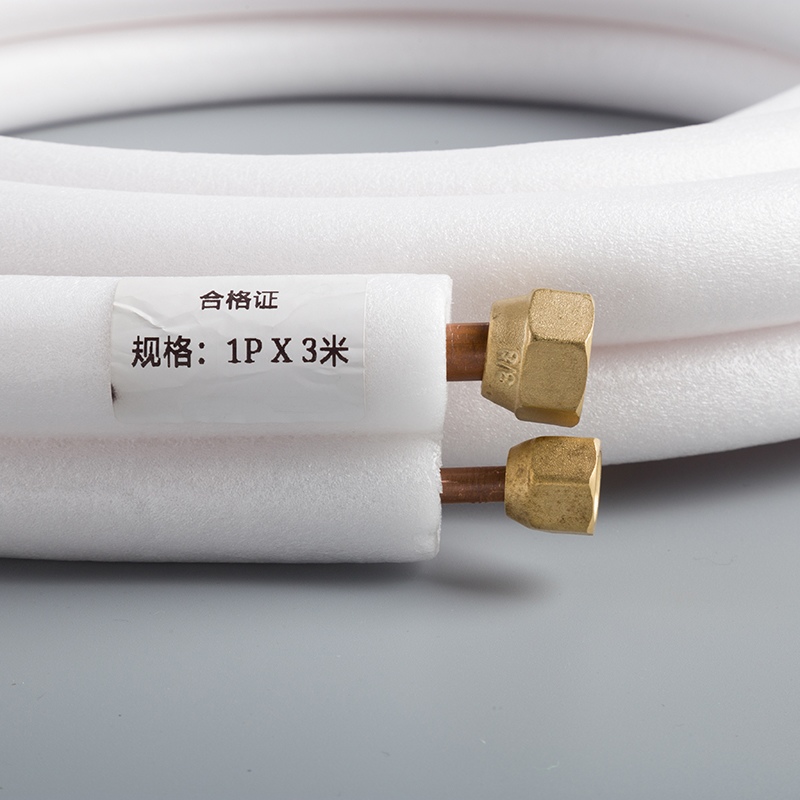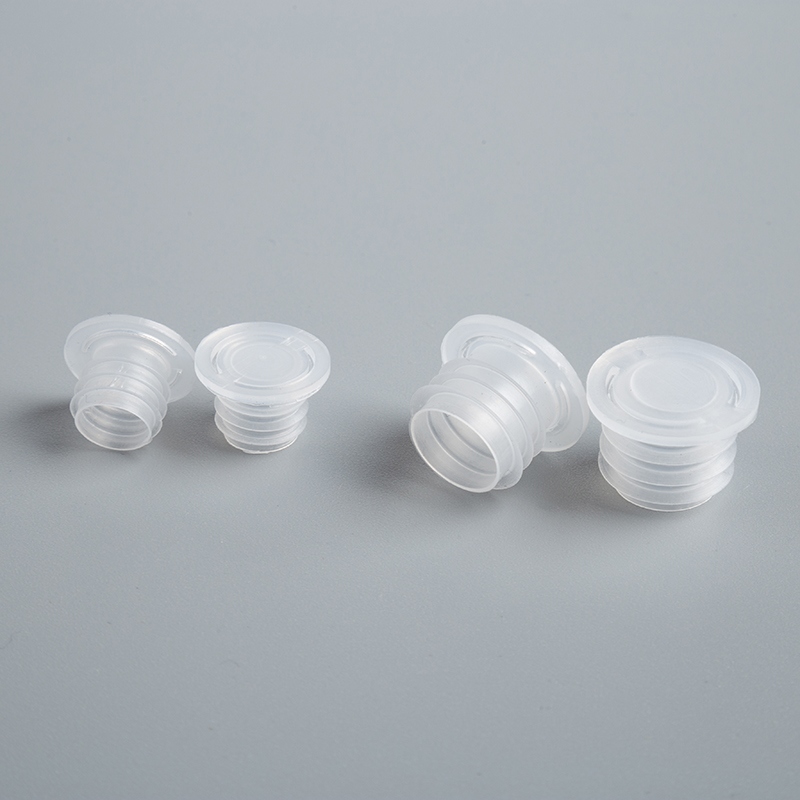Guide to Copper Pipe Sizes for Air Conditioning Systems

Selecting the correct copper pipe for air conditioning systems is essential for optimal performance and efficiency. By choosing the appropriate copper pipe sizes for air conditioning, you ensure the system operates effectively. Copper pipes are crucial for transporting refrigerants, which are vital for cooling. Understanding the various copper pipe sizes for air conditioning allows you to make informed decisions. Smaller diameter copper pipes for air conditioning can boost efficiency and lower energy consumption. They also help minimize airside pressure drop, resulting in noise reduction and material savings. By comprehending these concepts, you can enhance your air conditioning system's performance and longevity.
Understanding Copper Pipes
Copper pipes play a crucial role in air conditioning systems. They transport refrigerants efficiently, ensuring optimal system performance. To make informed decisions, you need to understand the different types and properties of copper pipes.
Types of Copper Pipes
Copper pipes come in various types, each with unique characteristics and applications. Let's explore the most common types of copper pipes used in air conditioning systems.
Type K Copper Pipes
Type K Copper Pipes have the thickest walls among all types. This makes them extremely durable and suitable for high-pressure applications. You might find them in underground installations due to their robustness. Although they are the heaviest and most expensive, their durability justifies the cost.
Type L Copper Pipes
Type L Copper Pipes offer a balance between thickness and flexibility. They are commonly used in both residential and commercial air conditioning systems. These pipes provide excellent corrosion resistance, making them ideal for indoor and outdoor installations. You can rely on Type L pipes for long-lasting performance.
Type M Copper Pipes
Type M Copper Pipes have thinner walls compared to Types K and L. They are lighter and more affordable, making them a popular choice for residential applications. While they may not be as durable as the other types, they still offer adequate performance for low-pressure systems.
Properties of Copper Pipes
Understanding the properties of copper pipes helps you choose the right type for your air conditioning system. Here are some key properties to consider:
Durability and Longevity
Copper pipes are known for their durability and longevity. They can withstand high pressures and temperatures, ensuring reliable performance over time. By choosing copper pipes, you invest in a long-lasting solution for your air conditioning needs.
Thermal Conductivity
Copper's excellent thermal conductivity makes it an ideal material for air conditioning systems. It efficiently transfers heat, enhancing the system's cooling performance. You benefit from faster cooling and improved energy efficiency.
Corrosion Resistance
Copper pipes offer superior corrosion resistance, which is essential for maintaining clean and safe refrigerant flow. This property ensures that your air conditioning system remains efficient and free from contaminants. You can trust copper pipes to deliver consistent performance without the risk of corrosion-related issues.
By understanding these types and properties, you can make informed decisions when selecting copper pipes for your air conditioning system. This knowledge empowers you to enhance system performance and ensure long-term reliability.
Copper Pipe Sizes for Air Conditioning

Understanding the standard sizes and dimensions of copper pipes is crucial for selecting the right copper pipe for air conditioning systems. These pipes come in various sizes, each with specific characteristics that suit different applications.
Standard Sizes and Dimensions
Nominal Pipe Size (NPS)
Nominal Pipe Size (NPS) refers to the standardized system used to identify the diameter of pipes. It provides a general idea of the pipe's size, but it doesn't represent the actual dimensions. When you choose a copper pipe for air conditioning, consider the NPS to ensure compatibility with your system's requirements.
Outside Diameter (OD)
The Outside Diameter (OD) is the actual measurement of the pipe's external width. This dimension is critical because it determines how the pipe fits with other components in the air conditioning system. Copper pipes for air conditioning often have ODs ranging from 1/8 inch to 1-3/8 inches, accommodating various system sizes and capacities.
Wall Thickness
Wall thickness affects the pipe's strength and durability. Thicker walls can withstand higher pressures, making them suitable for more demanding applications. When selecting copper pipe sizes for air conditioning, consider the wall thickness to ensure the pipe can handle the system's pressure requirements.
Factors Influencing Size Selection
Several factors influence the selection of copper pipe sizes for air conditioning systems. Understanding these factors helps you make informed decisions that enhance system performance and efficiency.
System Capacity
The capacity of your air conditioning system plays a significant role in determining the appropriate pipe size. Larger systems require pipes with greater diameters to accommodate the increased flow of refrigerants. By matching the pipe size to the system capacity, you ensure optimal performance and prevent potential issues.
Installation Environment
The environment where you install the air conditioning system also impacts pipe size selection. For instance, outdoor installations may require pipes with thicker walls to withstand environmental factors like temperature fluctuations and physical stress. Consider the installation environment to choose a pipe that offers durability and reliability.
Pressure Requirements
Pressure requirements are another critical factor in selecting copper pipe sizes for air conditioning. Systems operating at higher pressures need pipes with thicker walls to prevent leaks and ensure safety. Evaluate the pressure requirements of your system to select a pipe that meets these demands.
By considering these factors and understanding the standard sizes and dimensions, you can choose the right copper pipe for air conditioning systems. This knowledge empowers you to enhance system efficiency, reliability, and longevity.
Applications of Copper Pipes in Air Conditioning
Copper pipes play a vital role in both residential and commercial air conditioning systems. Their durability and ability to handle high pressure and temperature variations make them an ideal choice for transporting refrigerants. Let's explore how copper pipes are utilized in different air conditioning setups.
Residential Air Conditioning Systems
In residential settings, copper pipes are commonly used in two main types of air conditioning systems: split systems and packaged units.
Split Systems
Split systems are popular in homes due to their efficiency and flexibility. They consist of an indoor unit and an outdoor unit connected by copper pipes. These pipes transport refrigerants between the units, ensuring effective cooling. The use of copper pipe for air conditioning in split systems enhances performance by minimizing pressure drops and reducing energy consumption. Smaller diameter copper pipes can further optimize efficiency, leading to lower operational costs.
Packaged Units
Packaged units are another common choice for residential air conditioning. These systems house all components in a single unit, typically installed on rooftops or ground-level pads. Copper pipes within packaged units facilitate the movement of refrigerants, contributing to the system's overall efficiency. Their corrosion resistance ensures long-lasting performance, making them a reliable option for homeowners.
Commercial Air Conditioning Systems
In commercial environments, air conditioning systems often require more robust solutions to accommodate larger spaces and higher cooling demands. Copper pipes are integral to the functionality of centralized systems and Variable Refrigerant Flow (VRF) systems.
Centralized Systems
Centralized air conditioning systems serve large buildings or complexes by distributing cooled air through a network of ducts. Copper pipes are essential in these systems for transporting refrigerants from the central unit to various zones. Their ability to withstand high pressures and temperatures ensures consistent performance across the entire system. By selecting the appropriate copper pipe sizes for air conditioning, you can enhance the system's reliability and efficiency.
Variable Refrigerant Flow (VRF) Systems
VRF systems offer advanced climate control by allowing individual zone temperature adjustments. Copper pipes in VRF systems enable precise refrigerant flow management, optimizing energy use and comfort levels. The flexibility of copper pipes supports the complex piping arrangements required in VRF installations. This adaptability makes them a preferred choice for modern commercial air conditioning solutions.
Choosing the Right Copper Pipe Size

Selecting the appropriate copper pipe sizes for air conditioning systems is crucial for ensuring optimal performance and efficiency. This section will guide you through assessing system requirements and consulting with professionals to make informed decisions.
Assessing System Requirements
Understanding your air conditioning system's specific needs is the first step in choosing the right copper pipe size. This involves evaluating several key factors:
Load Calculations
Load calculations help determine the cooling capacity required for your space. You need to consider factors such as room size, insulation quality, and climate conditions. By accurately calculating the load, you can select a copper pipe size that matches the system's demands, ensuring efficient refrigerant flow and preventing overloading.
Efficiency Considerations
Efficiency plays a significant role in selecting copper pipe sizes for air conditioning. Smaller diameter copper pipes can enhance system efficiency by reducing energy consumption and operational costs. According to studies by ACHR News, using smaller diameter copper tubes in HVACR applications can lead to increased efficiency and reduced energy consumption. This optimization not only maintains performance but also reduces the total system charge, making it a cost-effective choice.
Consulting with Professionals
While assessing system requirements is essential, consulting with professionals ensures that you make the best decisions for your air conditioning system.
HVAC Technicians
HVAC technicians possess the expertise needed to evaluate your system's unique requirements. They can provide valuable insights into the most suitable copper pipe sizes for air conditioning based on your system's specifications. By working with a technician, you gain access to their knowledge and experience, which helps avoid potential pitfalls and ensures optimal system performance.
Industry Standards and Guidelines
Adhering to industry standards and guidelines is vital when selecting copper pipe sizes for air conditioning. These standards provide a framework for ensuring safety, reliability, and efficiency. By following established guidelines, you can confidently choose the right copper pipe size, knowing that it meets the necessary criteria for your system's operation.
In conclusion, choosing the right copper pipe size involves a thorough assessment of system requirements and consultation with professionals. By considering load calculations, efficiency, and expert advice, you can enhance your air conditioning system's performance and longevity.
Choosing the correct copper pipe size is crucial for your air conditioning system's efficiency and longevity. Proper sizing prevents frequent leaks and ensures optimal performance. As Fenwick Home Services highlights, frequent leaks indicate a need for replacement. To maintain your system's efficiency, consult professionals who can tailor solutions to your specific needs. Their expertise ensures you select the right pipe size, enhancing your system's reliability and performance. By making informed decisions, you safeguard your investment and enjoy a well-functioning air conditioning system.
See Also
Decoding Copper Pipe Dimensions: An In-Depth Manual
Benefits of Selecting Copper Tubing for Air Cooling
The Must-Have Handbook: Measuring Copper Pipe Diameter


